When you're moving into a new home or apartment, ensuring that your utility services are set up and verified is crucial for a smooth transition. A utility service verification request can help you confirm that everything from electricity to water is in order before you settle in. It's a straightforward yet essential step that can save you from unexpected disruptions. Want to learn more about how to effectively craft your letter for this important task? Read on!
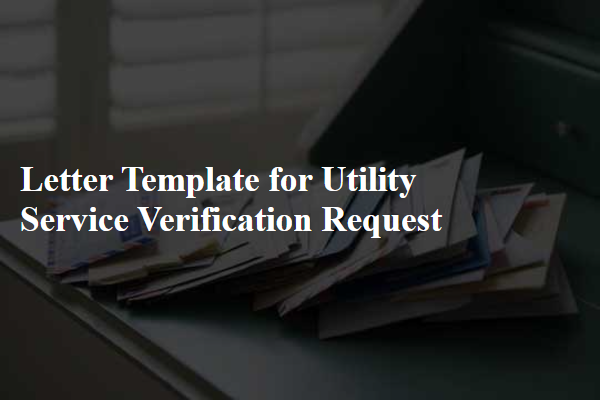
Sender's full name and contact information
A utility service verification request is an important document that often involves the submission of personal information and specific details regarding the service in question. To ensure clarity, the sender's full name, such as John Smith, along with contact information, including a phone number (e.g., (123) 456-7890) and a valid email address (e.g., john.smith@email.com), should be prominently displayed at the top of the document. This information enables the utility provider to verify identity and process the request efficiently. In addition, it's advisable to include the account number associated with the utility service (e.g., Account No. 987654321) for precise identification of the services requested for verification.
Recipient's utility service details
Utility service verification requests are critical for confirming account information and service provisions. This process typically involves providing specific details such as the account holder's name, address, and account number associated with the utility service, whether it be for gas, electricity, or water. Additional verification often includes details about the service type, an account balance, and usage history. Ensuring accuracy in these details is crucial for a smooth verification process, particularly for significant transactions like property rentals or sales, wherein proof of service can validate occupancy and responsibility for utilities. The verification can also involve communication with service providers like Pacific Gas and Electric (PG&E) or Consolidated Edison, which have specific protocols for responding to information requests.
Purpose of the verification
Utility service verification requests typically aim to confirm the provision of essential services such as electricity, water, or gas, crucial for residential or commercial operations. Verifications can support applications for government assistance programs, secure tenancy agreements, or validate identity during financial transactions. Information required often includes account holder names, service addresses, account numbers, and the utility provider's name. Various organizations, such as real estate companies, banks, or government agencies, may require such confirmations to ensure compliance with regulations or to assess the applicant's eligibility for certain programs.
Required verification information
Utility service verification requests often require specific information to ensure accurate processing. Necessary details typically include the name of the individual or business requesting verification, account number representing the utility service, type of utility (such as electricity, water, gas), service address indicating the physical location associated with the account, and contact information including phone number and email address for follow-up. Providing a valid identification document (like a driver's license or passport) may also be necessary to confirm identity. Additionally, any specific requests for verification period (like past due balances, account status) should be clearly stated to facilitate timely and efficient service.
Signature and date
Utility service verification requests often involve communication with companies supplying essential services such as electricity, water, or gas. This documentation typically includes identification details (name, address, account number) and states the purpose (verifying service or payment history). It might specify required signatures and dates to validate the request and confirm the authenticity of the involved party. Each utility provider may have unique compliance requirements to process these requests effectively. Prompt responses are often crucially important for timely service transactions, ensuring customers maintain uninterrupted utility access.
Letter Template For Utility Service Verification Request Samples
Letter template of utility service verification for government assistance
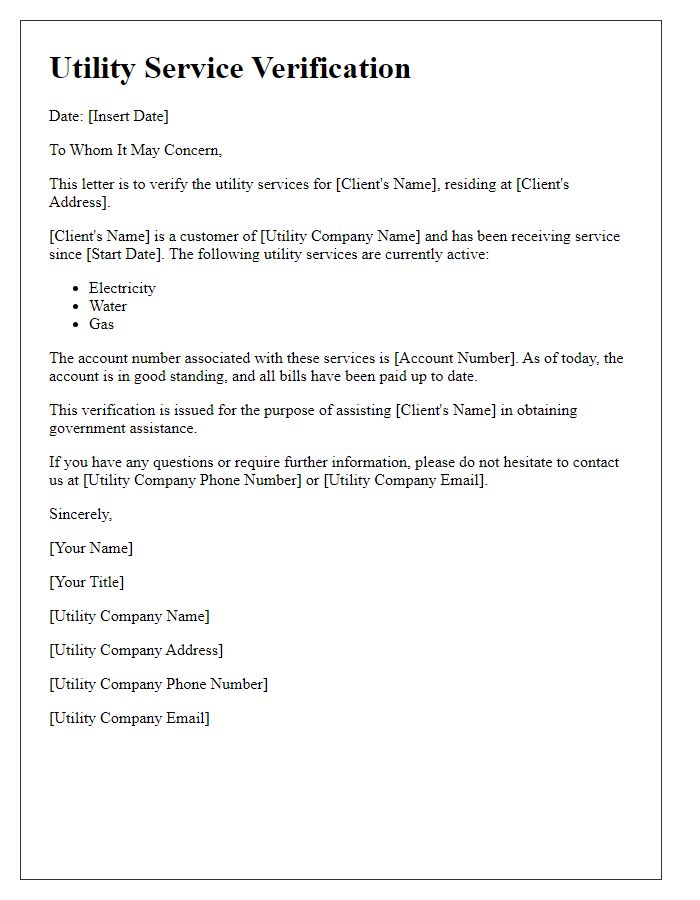

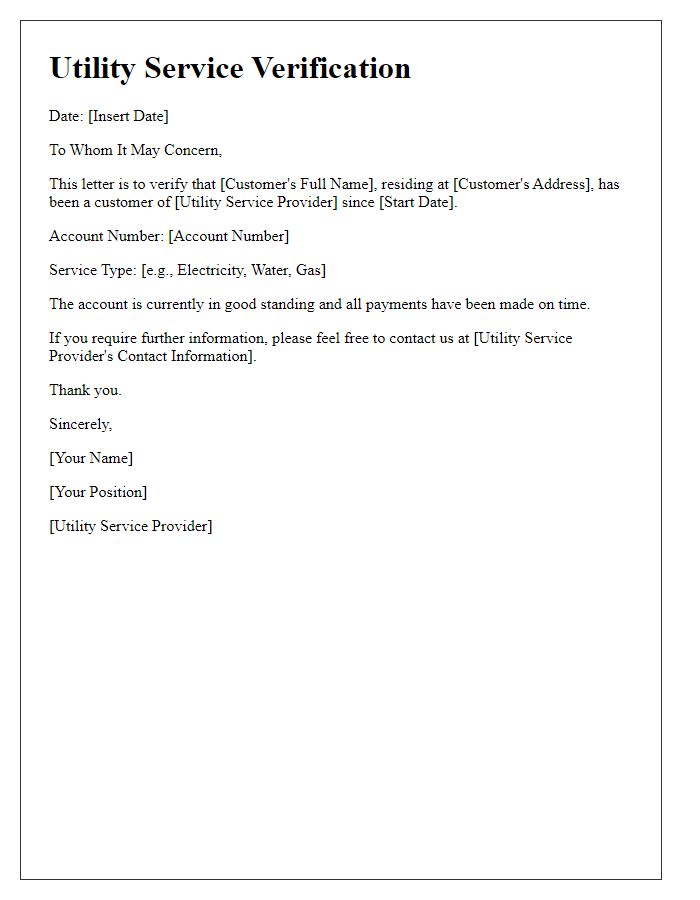
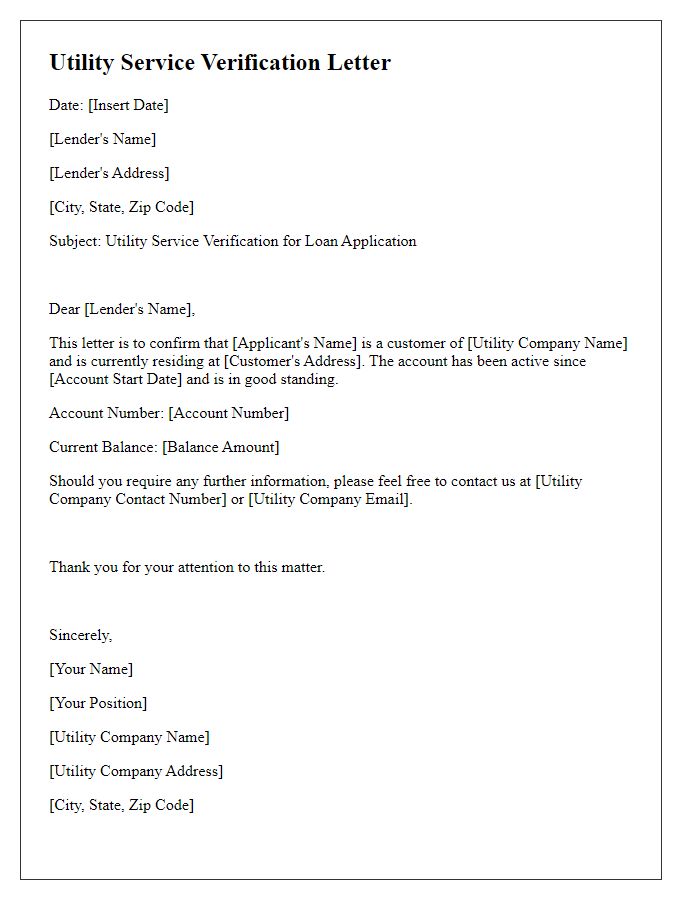
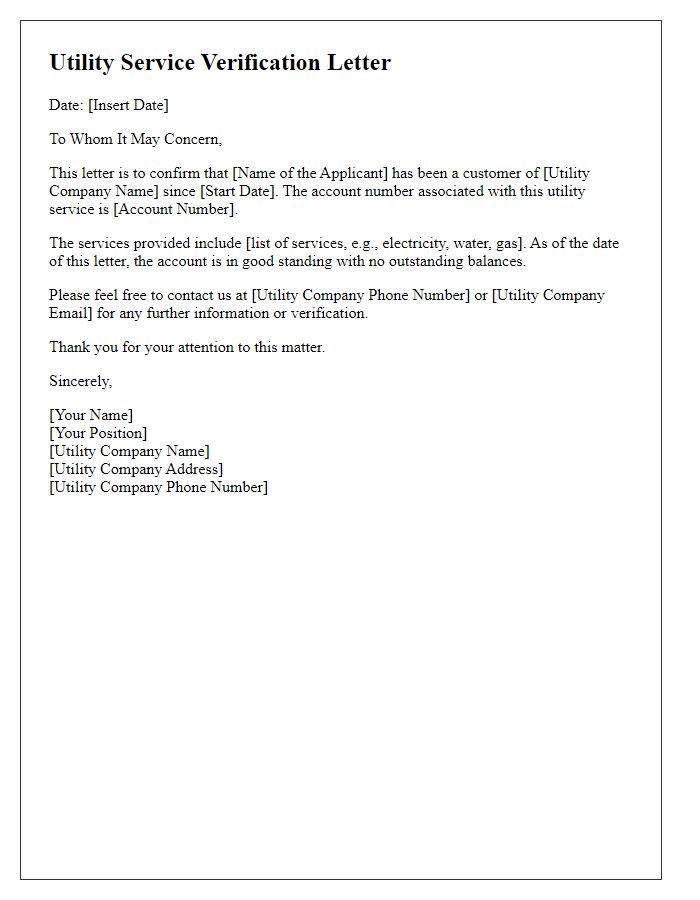
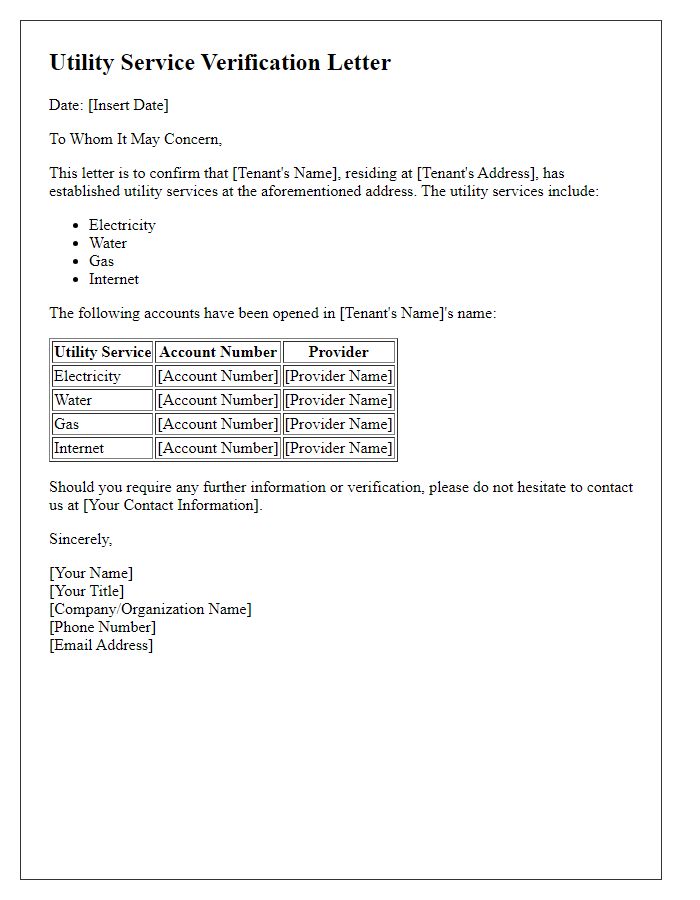
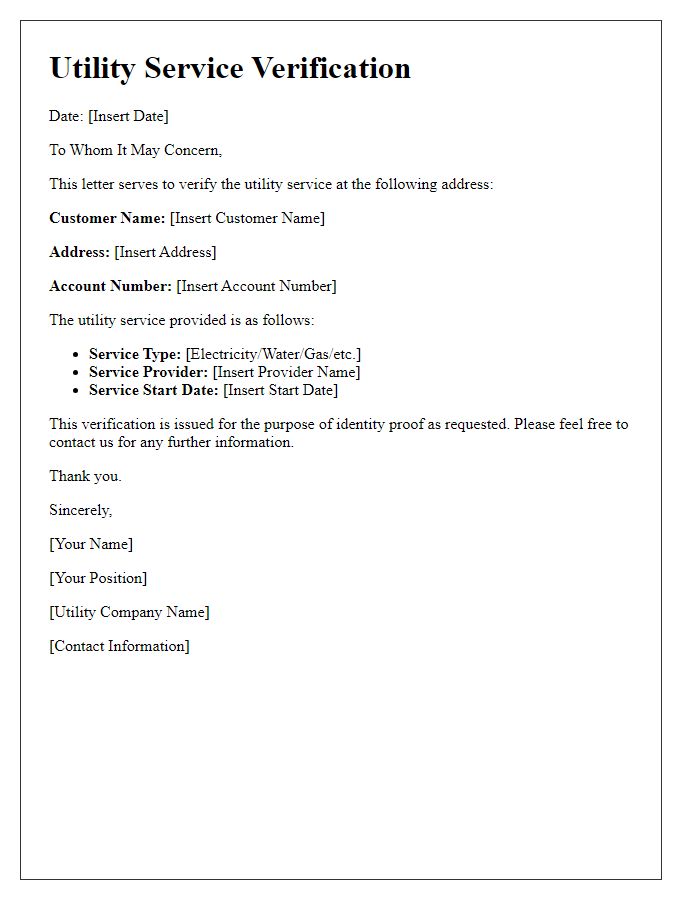
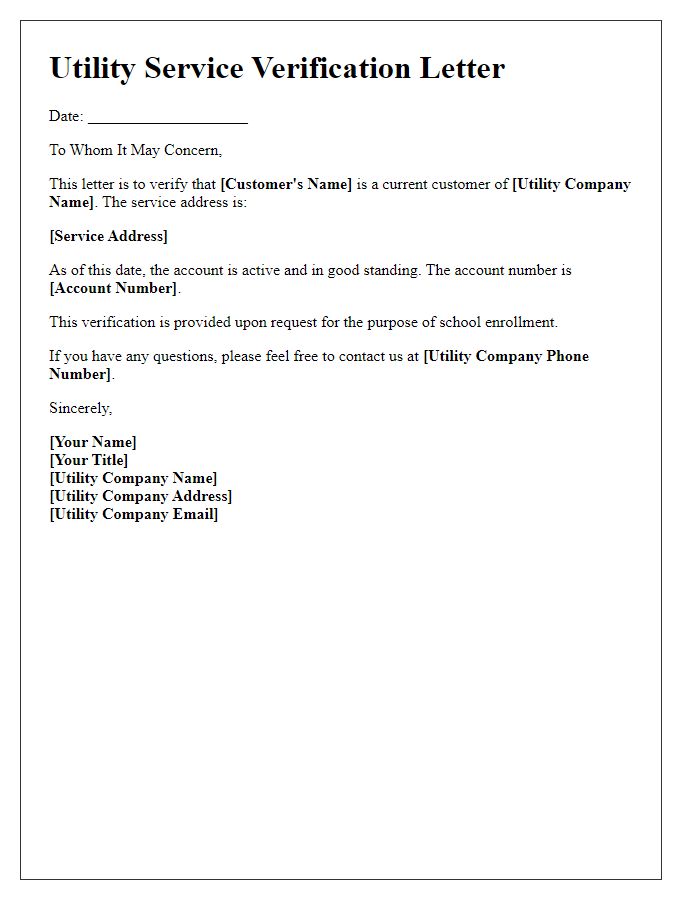
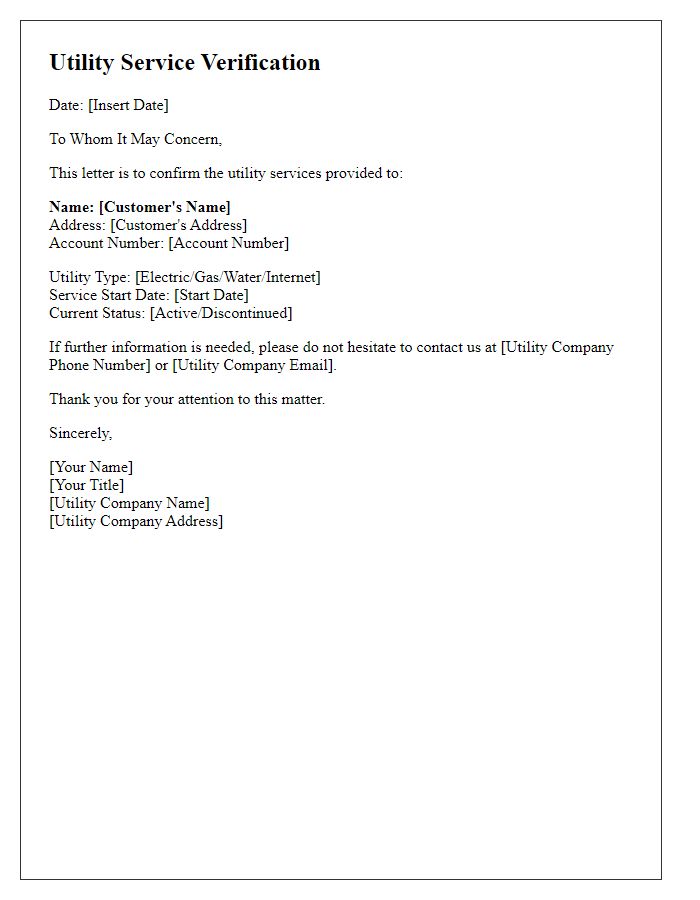
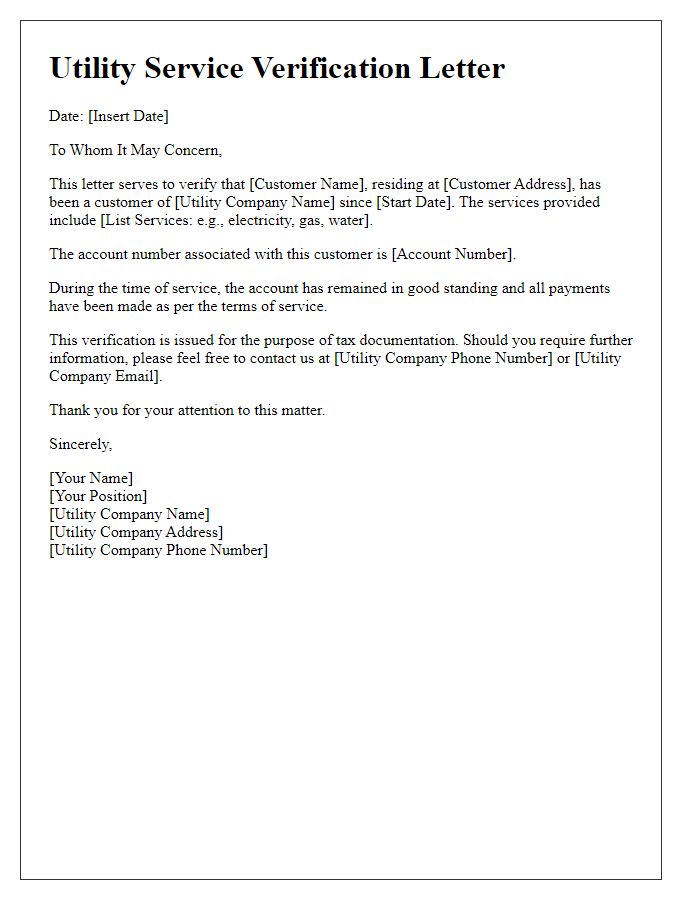
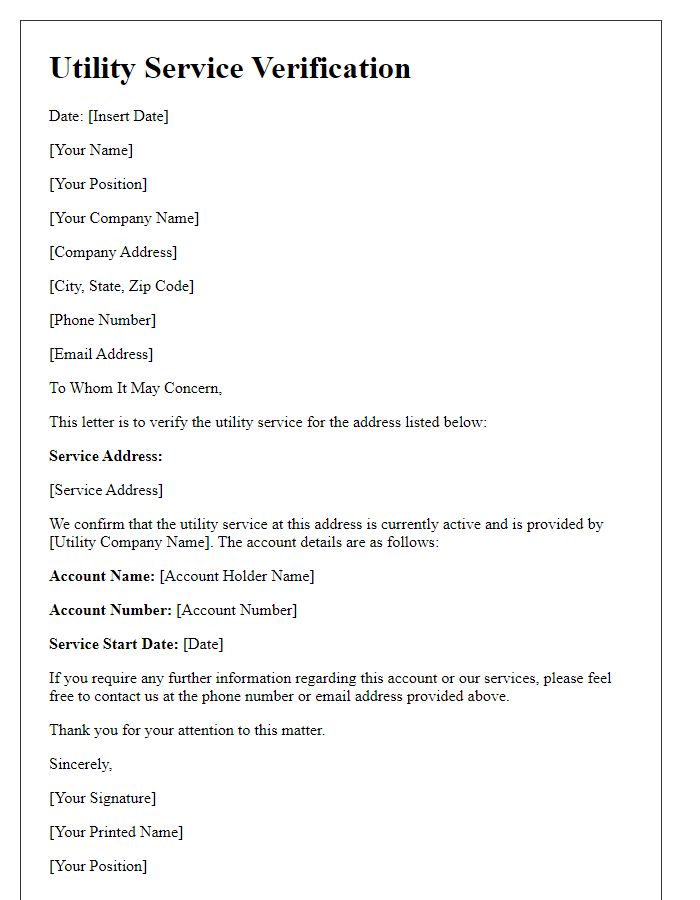

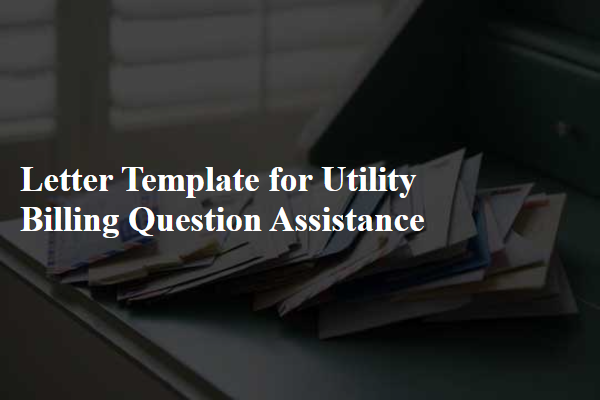
Comments